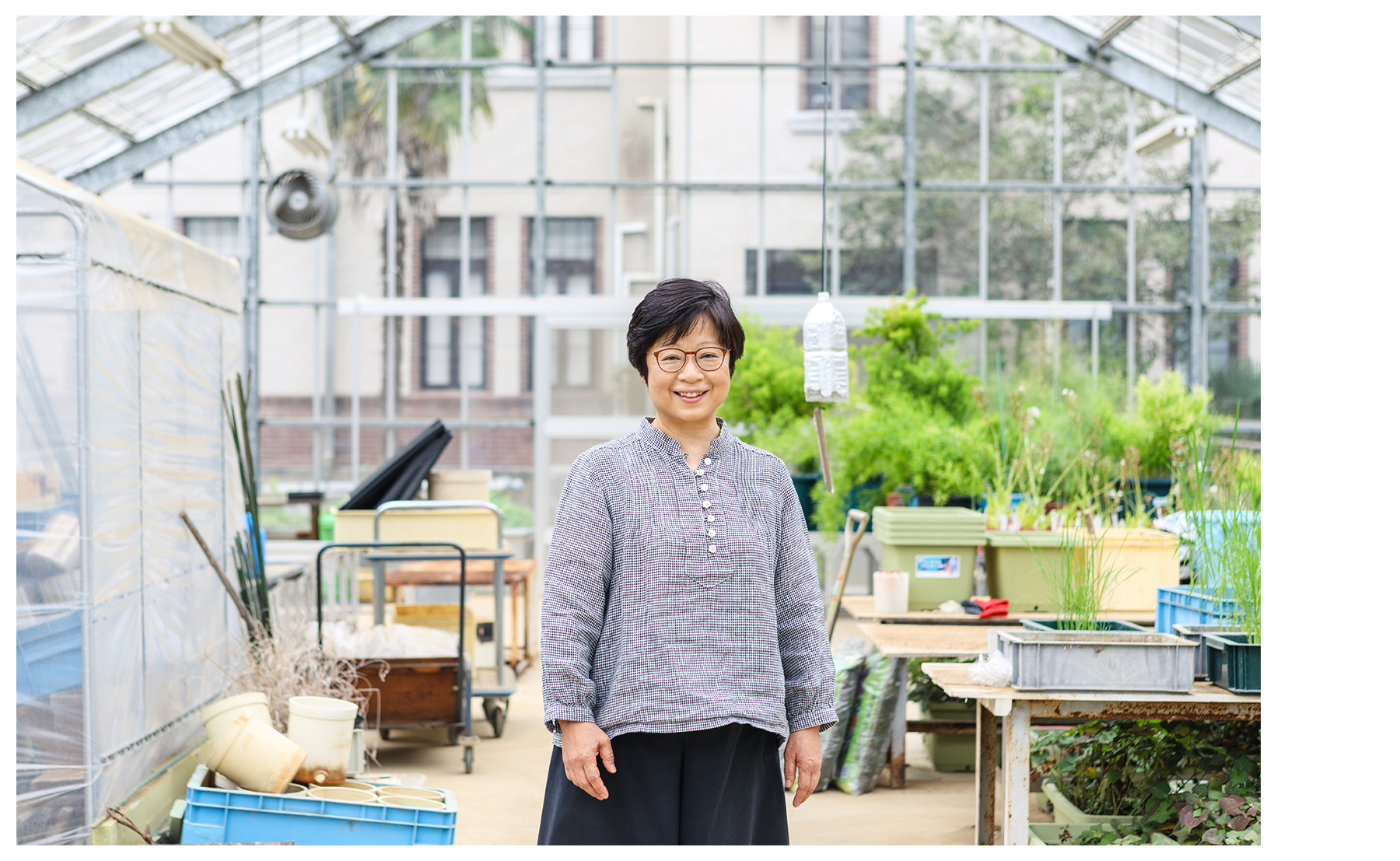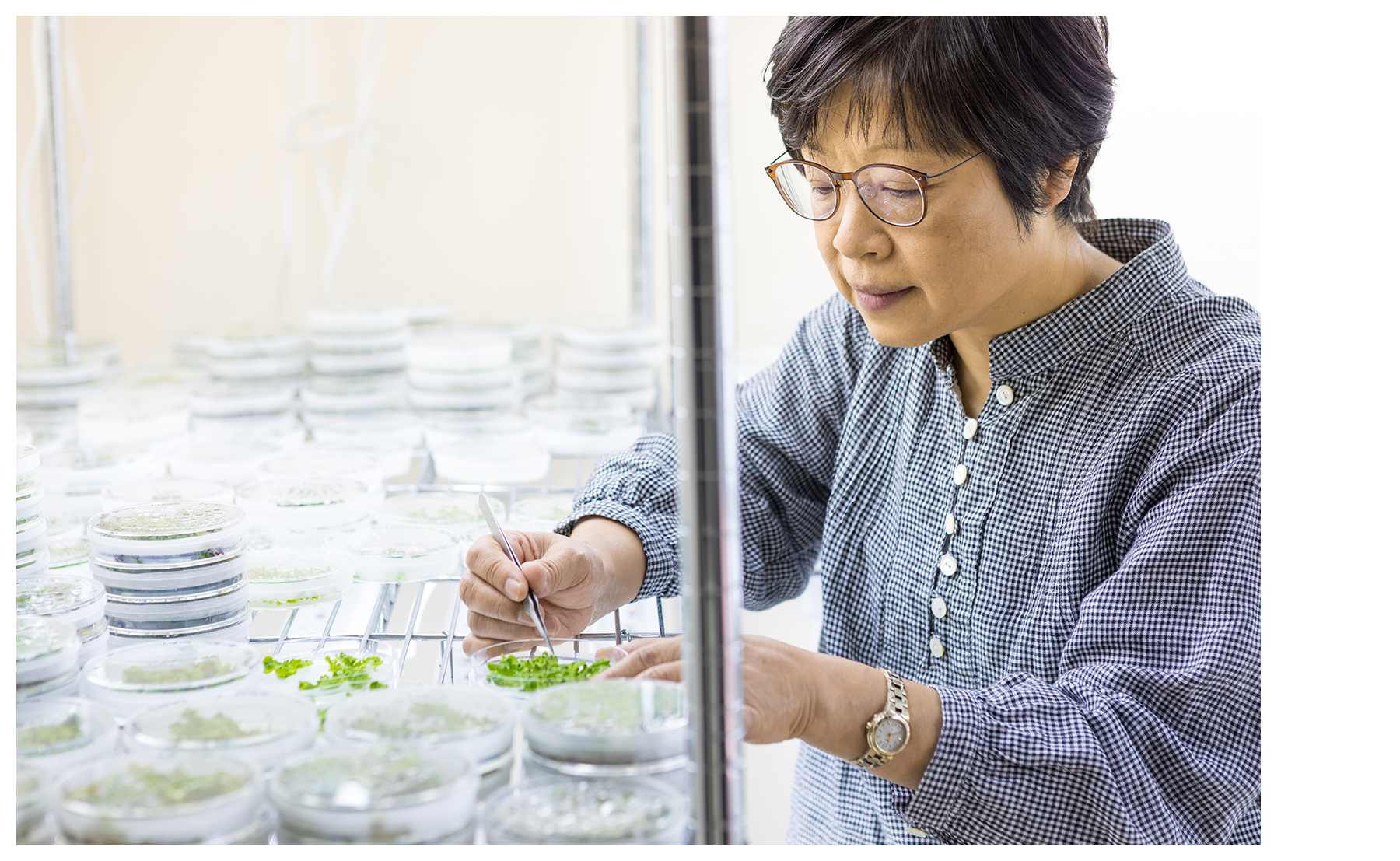I’m studying the mechanisms and evolution of shoot branching in plants. This is the key to the plant’s final shape. The main difference between plants and animals is that plants continue cell differentiation and growth throughout their lives. In addition, the growth pattern in plants is regular with a geometric beauty. This beauty is the result of an evolutionary strategy employed by plants to achieve the ‘goal’ of all organisms, to maximize reproduction. The most unique point of the strategy that plants employ is that they produce new stem cells and make new branches throughout their whole lives. My research’s current focus is on the evolution of shoot branching in plants using bryophytes, which were the first terrestrial plants.




- Name:Junko KYOZUKA
- Position:Professor of department of Biology, Faculty of Science and graduate school of Life Sciences
- Laboratory:Plant development
- Hometown:Kurobe in Toyama
- Favorite Books:I like reading novels. The most recent one I’ve read is Yuval Noah Harari's ‘21 Lessons for the 21st Century’. His series of books are inspiring.
- Research area:Plant development
- Posted Date:Jan 25, 2021
1.What kind of the research are you doing?
2.What is the reason for starting your study?
Ever since I was a child, I have been interested in the ‘process of change’, such as the steady accumulation of snow or the gradual opening of a flower. Even now, I like to observe progress in nature. Subconsciously, I think I study plants because when I look at them I can almost feel that they are growing. The direct impetus for my decision to study branching came when I was a postdoc in Australia and was struck by the beauty of the fractal patterns of eucalyptus branches silhouetted against in the clear sky on a winter evening. Later, when I saw romanesco (a type of cauliflower with a beautiful spiral form), it reminded me of the eucalyptus patterns. I started studying rice inflorescence branching but about 10 years ago I saw a Marchantia liverwort plant growing in a petri dish. It had superbly regular, radial branching and I decided that I would have to study this ancient plant next. And here I am!
3.Message for prospective students
I often wonder what I enjoy about research, the repetitive process of observing, analyzing and formulating hypotheses, and then testing them. If a hypothesis is correct, the data obtained is clear and simply beautiful. If the data requires a convoluted explanation, then something is wrong. The most rewarding part of the research process is the feeling of relief when you are sure you have proved your hypothesis and found ‘the answer’. This is also the moment when I realize that living organisms are incredibly amazing. Among the millions of chance mutations that have occurred during the process of evolution, each species must have somehow chosen the traits and genes that have resulted in their optimum survival and reproduction. The beauty in the growth patterns of plants is the result of the evolution of molecular mechanisms through such chance, and necessity. Deciphering this intricate and magnificent drama requires some effort, but nothing can replace the joy of finding wonder in life!

